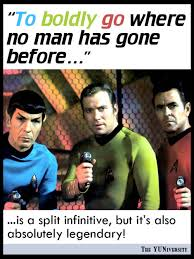Burning the gods: a letter to Visesio Siasau
The historiography of the Free Wesleyan Church is like a house with only two rooms, one damp and cramped and dimly-lit and malodorous, and the other bright and high-ceilinged and air conditioned. The door between the room called the Age of Darkness and the room called the Age of Enlightenment was fashioned, of course, by Taufa’ahau and his earnest advisor, the Reverend John Thomas. They were the architects of the Free Wesleyan Church and the modern Tongan monarchy, and it is not surprising that the publication of Thomas’ History of Tonga last year in Nuku’alofa was hailed by the church and the royal family alike.
Copies of Thomas’ tome flew out the door of the Friendly Islands Bookshop, but I wondered how any Tongans bought the book out of a sense of religious and political obligation, rather than out of genuine curiosity. I wonder, as well, whether Thomas would appreciate the way that many scholars, Tongan and palangi alike, will inevitably read his text.
As you know, Thomas’ book is full of scornful yet informative descriptions of the old, pagan Tongan culture that dominated Western Polynesia for hundreds of years, and raised stone monuments to its kings and queens at the sacred city of Mu’a. We skip the pages the reverend devoted to glories of John Wesley and the exposition of Christian doctrine, and linger instead over a description of the wooden goddess who presided over a godhouse in Mu’a, or an account of a visit to the persistently pagan village of Pe’a, where tapa makers refused Thomas’ demand that they cease their pounding on the Sabbath.
But I wanted to talk about a couple of other books I encountered last year, books which help me to understand your art.
As one piqued stoner complained, Plant often seems more interested in literary highs – in the dreamy lift of De Quincey’s endless sentences, or the hallucinatory flares of Michaux’s metaphors – than in chemical pleasures.
Claiming that Hinduism and Polynesian religions have deep similarities, Gunson suggests that Malay traders who bowed to Shiva and Vishnu introduced Vedic cosmology to the Pacific. It’s curious how they didn’t also introduce their language and material culture. As critics of Thor Heyerdahl showed decades ago, hyper-diffusionism is a busted flush. Ideas and rituals and technological discoveries don’t occur in one, blessed locale and then spread miraculously around the globe. Innovation occurs everywhere, and most cultures develop in situ.
I want to mention David Lewis-Williams' book The Mind in the Cave because it offers another, and much more credible, explanation for the apparent similarities between the ancient religions of distant parts of the world. Lewis is an art historian who has spent decades stooped in the caves, grottoes, and canyons of southern Africa, studying the paintings the San people made there hundreds or thousands of years ago. The Mind in the Cave compares these African images to the much more famous paintings found in Neolithic European galleries like Lascaux, and argues that both are the products of a shamanic religion.
As you know, the claim that ancient Tongan culture was shamanic is unpopular with many Tongan scholars. I think there is good reason for this hostility: the notion that Tonga’s traditional religion was similar to those found in many different parts of the world troubles the presuppositions of two important schools of Tongan historiography. On the one hand, it contradicts conservative Christian historians like Sione Latukefu, who assume that it was Christianity in general, and the Thomas-Taufa’ahau double act in particular, that brought Tonga out of darkness and isolation and gave it a global culture.
On the other hand, the shamanism thesis upsets aggressively localist scholars like Linita Manu’atu, who consider that Christianity and modernity destroyed a very idiosyncratic Tongan culture, and want to reconstruct that ‘pure’ pre-contact culture.
Niel Gunson’s arguments have not been broadcast to the general Tongan population, but if they were I think they would be greeted with a mixture of incredulity and anger.
What of the widespread Tongan belief that illness, whether mental or physical, is caused by malign or mischievous spirits, and the flourishing trade of folk healers, who use massages and canes to try to force unwanted visitors from the bodies of the ill? What about the ui ui tevolo craze, which sees young people in the villages operating homemade ouja boards at night, in an effort to summoun the spirits of ancestors?





















